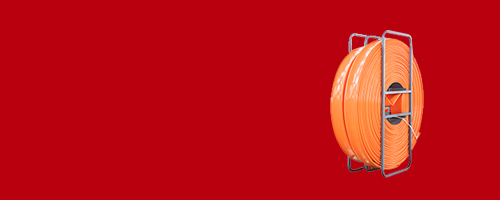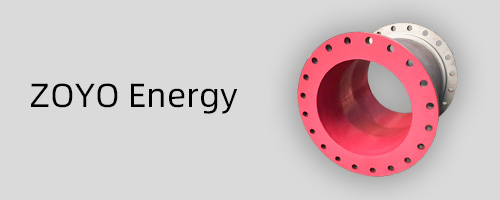
Is Your Fire Fighting Hose Ready for a Real Emergency
2025-10-16 09:43
You’re inspecting your facility. The alarms are tested, the extinguishers are charged, and the exit signs are lit. But when was the last time you took a long, hard look at the fire fighting hose? Not just a glance, but a true, pressure-test-ready, inspection-of-every-component evaluation? For many, this crucial piece of life-saving equipment becomes part of the background—a red rack on the wall that we hope we never have to use. But when an emergency strikes, that hose is the literal lifeline between a manageable incident and a catastrophic loss. The question isn't just about having a hose; it's about having a hose system you can absolutely depend on.
At ZYfire Hose Corporation, we've dedicated over three decades to answering that question with a resounding "yes." We believe that confidence in your emergency equipment isn't a luxury; it's a necessity. This comprehensive guide will walk you through everything you need to know about fire hoses—from the science behind their construction to the critical steps of maintenance and selection. Our goal is not just to sell you a product, but to empower you with the knowledge to protect what matters most.
Beyond the Red Rubber: What is a Modern Fire Fighting Hose?
Gone are the days when a fire hose was simply a tube for carrying water. Today, it is a highly engineered, precision-built hydraulic conduit designed for one of the most brutal jobs imaginable. Understanding its components is the first step to appreciating its importance.
A modern fire hose, like those manufactured by ZYfire Hose, is typically composed of multiple layers:
The Inner Liner: This is the tube that carries the water. It must be incredibly smooth to minimize friction loss (which reduces water pressure and flow) and highly resistant to a wide range of chemicals, abrasion, and microbial growth. We use advanced, polymer-based materials to ensure a durable, non-stick surface that maintains its integrity for years.
The Reinforcement Layer(s): This is the muscle of the hose. Woven or braided from high-tensile synthetic fibers like polyester or aramid, this layer contains the immense internal pressure. The pattern and density of this weave determine the hose's pressure rating (e.g., 300 PSI, 600 PSI). A double-jacketed hose has two such layers for extra durability.
The Outer Cover: This is the shield. It protects the reinforcement layers from external abrasion, weather, UV radiation, oil, and chemical exposure. A rugged, weather-resistant outer cover is what allows a hose to survive the tough conditions of a fire scene and the slow degradation of long-term storage.
The ZYfire Difference: Our engineering team doesn't just layer materials together. We fuse them. Our proprietary Fusion-Bond™ manufacturing process chemically bonds each layer, creating a single, unified structure. This eliminates the delamination (separation of layers) that plagues traditionally made hoses, especially after rough use or improper rolling. The result is a hose that is more flexible at low temperatures, more resistant to kinking, and has a significantly longer service life.
The Unseen Killer: Why Fire Hoses Fail (And How to Prevent It)
A fire hose failure during an emergency is a nightmare scenario. It’s not just about the equipment breaking; it’s about a loss of confidence and a critical delay in response. Most failures are preventable and fall into a few key categories:
1. Improper Storage and Damage:
The Problem: Hoses stored damp in a dark locker will develop mildew, which eats away at the inner liner and weakens the fibers. Outer covers can be scuffed and cut by sharp edges on racks or apparatus.
The Prevention: Always air-dry hoses completely after testing or use. Store them on clean, rounded-edge racks. For hose reels, ensure they are wound neatly without sharp bends. Inspect storage areas for potential hazards.
2. The Menace of Ultraviolet (UV) Light:
The Problem: Continuous exposure to sunlight, even through a window, breaks down the chemical bonds in the outer cover. It becomes brittle, cracked, and loses its protective qualities. A quick visual inspection can miss the microscopic cracking that precedes a major blowout.
The Prevention: Store hoses in closed cabinets or covered racks. If sun exposure is unavoidable, specify hoses with a UV-Inhibited Outer Cover, a standard feature on all ZYfire industrial and outdoor hoses.
3. Chemical Corrosion and Abrasion:
The Problem: Industrial sites often have oils, solvents, and acids on the floor. These chemicals can rapidly deteriorate the outer cover and, if they seep through, the inner liner.
The Prevention: For high-risk environments, a specialized hose is required. ZYfire offers Chem-Bloc™ hoses with a nitrile rubber compound outer cover that provides superior resistance to a wide range of hydrocarbons, oils, and chemicals.
4. The Dangers of Improper Maintenance and Testing:
The Problem: Hoses are pressure vessels and must be tested regularly according to NFPA 1962 or your local authority's standards. Using the wrong pressure, testing with air instead of water (extremely dangerous due to the explosive energy release), or failing to inspect couplings can lead to catastrophic failure.
The Prevention: Establish a strict, documented service testing schedule. Visually inspect the entire hose length, couplings, and gaskets for any signs of wear, damage, or leakage before and after each test. Train personnel on proper testing procedures.
Choosing the Right Hose: It's Not One-Size-Fits-All
Selecting a fire hose is a technical decision. The right choice depends entirely on the application.
Standpipe and Stationary Use: These hoses are pre-connected in buildings and are typically a smaller diameter (1.5 or 1.75 inches). They need to be lightweight for occupant use but durable enough for fire department connection. Look for hoses with a high abrasion resistance and excellent flexibility in tight spaces.
Industrial and Municipal Firefighting: This is the workhorse. Larger diameter hoses (2.5, 3, 4, or 5 inches) are used to move large volumes of water from hydrants to pumpers and from pumpers to master stream devices. Durability, high-pressure ratings, and resistance to being dragged over rough terrain are paramount. ZYfire's Maximus™ HD series is built specifically for this punishing duty.
Forestry and Wildland: These hoses are all about being lightweight and highly portable. They are often deployed from rolling packs and need to be incredibly resistant to UV light and abrasion from rocks and debris.
Agricultural and Special Purpose: Applications like washdown, dust control, or transferring non-flammable liquids may require a different type of hose. It's critical to never use a standard fire hose for purposes it wasn't designed for.
A Note on Couplings: The hose is only as good as its connection. Couplings, whether threaded, Storz, or other quick-connect types, must be made from corrosion-resistant materials like brass, aluminum, or stainless steel. They should be securely attached (swiveled) to the hose and inspected for damaged threads and worn gaskets every single time.
Your Proactive Maintenance Checklist: A Partner in Preparedness
Knowledge is useless without action. Here is a simple, actionable checklist you can implement today.
Weekly/Monthly Visual Inspection:
Check for any cuts, abrasions, or cracks in the outer cover.
Ensure the hose is completely dry and stored neatly.
Check couplings for tightness, damaged threads, and intact gaskets.
Look for any signs of mildew or chemical damage.
Ensure the hose rack or cabinet is accessible, clean, and unobstructed.
Annual Service Test (Performed by Trained Personnel):
Conduct a hydrostatic pressure test to the manufacturer's recommended pressure (typically 1.5x the service pressure but follow local regulations).
Visually inspect the entire hose during the test for any leaks or significant elongation.
Check and record the test date on the hose tag.
After testing, dry the hose completely before re-racking.
The ZYfire Promise: Engineering Trust, Delivering Confidence
At ZYfire Hose Corporation, our mission is built on a foundation of Experience, Expertise, Authoritativeness, and Trustworthiness (E-E-A-T).
Experience: For over 30 years, we have been in the field. Our founders are former firefighters and engineers who understood the gaps in the market. We don't just make hoses; we use them, test them, and rely on them. This real-world experience informs every design decision we make.
Expertise: Our R&D team includes material scientists and hydraulic engineers who are pushing the boundaries of what a fire hose can be. We hold numerous patents for our manufacturing processes and material compounds. We don't follow standards; we aim to exceed them.
Authoritativeness: Our technical data sheets, testing protocols, and educational materials like this blog are relied upon by safety managers and fire chiefs worldwide. We actively contribute to industry forums and work with standards committees to promote best practices.
Trustworthiness: Our reputation is our most valuable asset. We stand behind every hose that leaves our facility with a clear, comprehensive warranty and unparalleled customer support. Our manufacturing processes are transparent, and our materials are sourced for quality and reliability, not just for cost.
We understand that when you specify a ZYfire hose for your building, fleet, or industrial facility, you are entrusting us with the safety of your people, your property, and your community. It is a responsibility we take with the utmost seriousness.
Conclusion: Don't Wait for the Alarm to Sound
So, let's return to the initial question: Is your fire fighting hose ready for a real emergency?
After understanding the engineering, the potential failure points, and the rigorous maintenance required, you are now equipped to answer that question with authority. Preparedness is not a single action but a continuous cycle of inspection, maintenance, and education.
Don't let your fire hose be the weakest link in your safety plan. Be proactive. Schedule that inspection today. Review your testing records. And when it's time to repair or replace, choose a partner who understands the stakes.
Contact ZYfire Hose Corporation today for a consultation. Let our experts help you audit your current equipment and select the right hose solutions for your specific needs and risks. Because when every second counts, you need a hose that won't let you down.
Get the latest price? We'll respond as soon as possible(within 12 hours)









